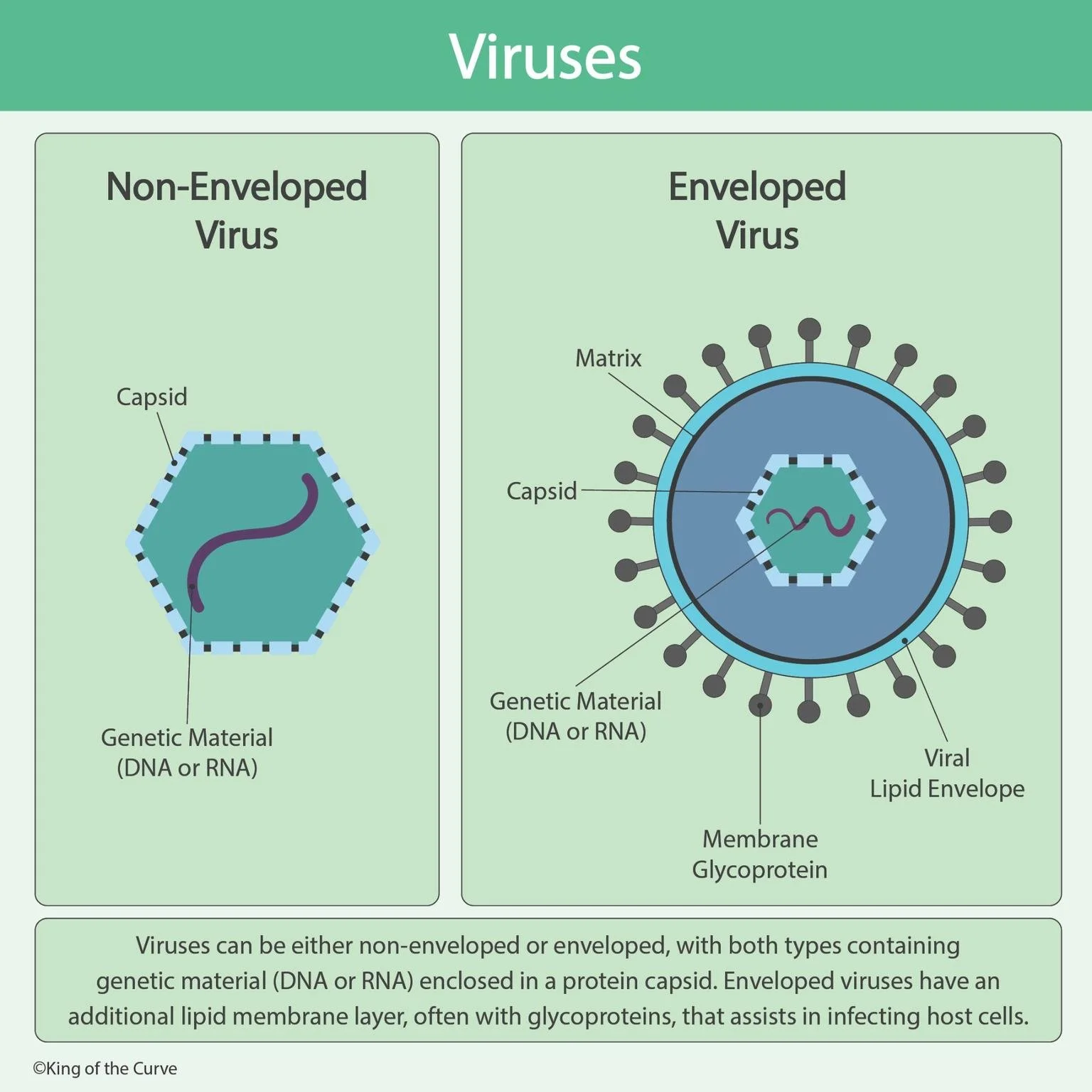🦠 Enveloped vs. Non-Enveloped Viruses: A Visual MCAT Breakdown
Viruses are one of the most frequently tested topics in the Biology and Biochemistry section of the MCAT. But students often overlook the structural differences between enveloped and non-enveloped viruses, which can affect everything from immune evasion to vaccine development.
🔍 Why This Topic Is High-Yield for the MCAT
Expect to see questions asking you to:
Differentiate viral replication methods
Predict viral stability in external environments
Understand host-cell entry mechanisms
A solid grasp of viral envelope structure will help you crush both passage-based and discrete questions.
🧬 What Is a Virus, Again?
A virus is a non-living infectious agent composed of:
Genetic material (DNA or RNA)
A protein coat (capsid)
Sometimes a lipid membrane envelope
🧊 Non-Enveloped Viruses
These viruses contain:
A protein capsid enclosing the DNA or RNA
No lipid membrane
📌 Characteristics:
More resistant to desiccation, heat, and detergents
Typically transmitted via the fecal-oral route
Exit host cells via lysis (rupturing)
Example Viruses: Poliovirus, Adenovirus
💦 Enveloped Viruses
In addition to a capsid, these viruses have:
A lipid membrane envelope derived from the host cell
Glycoproteins on the membrane surface
A matrix layer (structural support)
📌 Characteristics:
Less stable outside the body due to the lipid envelope
Require direct contact or fluid transmission
Exit host cells via budding
Example Viruses: HIV, Influenza, Herpesvirus
🧠 MCAT-Style Question Strategy
Example MCAT Question:
A researcher creates a vaccine targeting membrane glycoproteins found on a virus. Which type of virus is most likely being targeted?
A. Non-enveloped
B. Enveloped
✅ Answer: B. Membrane glycoproteins are found only on enveloped viruses.
📊 Summary Table
| Feature | Non-Enveloped Virus | Enveloped Virus |
|---|---|---|
| Envelope Present? | ❌ No | ✅ Yes |
| Environmental Stability | High | Low |
| Exit Mechanism | Cell lysis | Budding |
| Transmission | Fecal-oral, respiratory | Blood, sexual, respiratory fluids |
| Examples | Adenovirus, Norovirus | HIV, Influenza, Herpesvirus |
✅ Final Takeaways
The presence of a viral envelope impacts transmission, immune evasion, and stability.
Enveloped viruses are more fragile and require membrane fusion to infect host cells.
Non-enveloped viruses are more durable and can survive harsher conditions.
📲 Ready to Go Viral (in a Good Way)?
Want to master more MCAT topics with visually rich learning tools, gamified drills, and adaptive practice?
👉 Explore Pre-Med Essentials
👉 Get Your Daily Question of the Day
👉 Join KOTC Free Forever
Frequently Asked Questions (FAQs)
-
Aim for 4-6 focused hours, ensuring you incorporate breaks to avoid burnout.
-
Practice mindfulness techniques, take practice exams under realistic conditions, and maintain a balanced lifestyle.
-
Set short-term goals, seek support from mentors, and reward yourself for small achievements.
-
Regular exercise improves focus, reduces stress, and enhances overall mental clarity.
-
KOTC offers personalized learning tools, gamification features, and adaptive question banks to help students stay on track without burnout.


